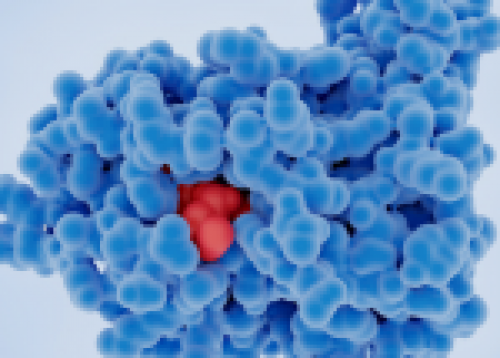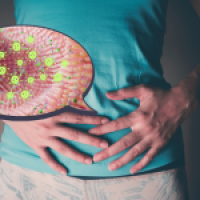Mycotoxin Binders

Mycotoxin binders play a crucial role in the detoxification of mycotoxin-related illnesses. Determining the appropriate binder for a specific mycotoxin can be challenging, but understanding the connection between mycotoxins and effective binders is essential to help people overcome unexplained fatigue and all over body pain. Here we take a look at research linking mycotoxins to suitable binder choices. A good way to better understand the following information is to locate a functional medicine practitioner who is trained in mold diagnosis and treatment.
Positive OAT and MycoTOX Tests
Following a positive Organic Acids Test and MycoTOX Profile, mold and mycotoxins become a significant factor for many symptomatic clients. Selecting the right binder becomes a challenge when dealing with mycotoxicosis. The research on the binding capacity of each binder may not be as extensive as that of other agents, making it daunting to navigate through the available information. While the task of eliminating mold can be daunting, the benefits of mold symptom relief and improved health and lifespan far outweigh the frustration of getting rid of mold from the body.
Toxin Elimination Pathways
Toxins are eliminated from our bodies through various pathways, including urine, stool, bile, and skin. Binders play a crucial role in the detoxification process, particularly in bile and stool elimination routes. Bile, responsible for packaging fat-soluble substances like mycotoxins, can be reabsorbed in the colon, leading to toxin recirculation. Binders adhere to the bile, preventing reabsorption, but it’s essential to ensure regular bowel movements to avoid potential resorption issues.
Mycotoxin Binders
Cholestyramine and Welchol
Cholestyramine and Welchol, commonly used in prescriptions, are known for their lipid-lowering activity and are effective binders in mycotoxin detoxification protocols. They directly bind to bile in the gastrointestinal tract, facilitating the excretion of mycotoxin-laden bile, particularly effective against ochratoxin a (OTA).
Activated Charcoal
Activated charcoal, a well-known binder, is effective in binding various mycotoxins in the gut, including OTA and macrocyclic trichothecenes like verrucarin a and roridin e. Bentonite clay and zeolite clay are other binders that exhibit affinity for aflatoxins, particularly useful in reducing toxic loads in animal feed and the GI tract.
Glucomannan
Glucomannan, a water-soluble polysaccharide, has shown efficacy in binding mycotoxins such as aflatoxin and OTA. Fibrous supplements and foods, including oats, wheat bran, and lignans in flax and chia, act as simple overall binders by sequestering bile and lowering cholesterol, indirectly reducing toxic loads.
Chlorella
Chlorella, a plant-based binder, is known for its ability to bind heavy metals and aflatoxins. Its safety profile makes it suitable for various populations, including constipated children and pregnant or breastfeeding women.
Humic and Fulvic Acid
Humic acid and fulvic acid, byproducts of organic matter decomposition, act as biotoxin binders and anti-inflammatories. They are versatile additions to detoxification protocols.
Probiotics
Surprisingly, probiotics, known for their role in gut health, also directly bind to mycotoxins. Lactobacillus strains like L. pentosus and L. beveris bind aflatoxins, while L. plantarum C88 binds aflatoxins and upregulates antioxidant activity. Saccharomyces strains, especially S. cerevisiae and S. boulardii, demonstrate effective binding to various mycotoxins, offering a holistic approach to gut treatment and detoxification. Using a combination of these probiotic strains enhances the detoxification process.
Helpers for Binders
Taurine
Taurine is an amino acid that helps increase the production of bile acids. Bile acids are needed to move mycotoxins out of the liver and into the gastrointestinal tract so that they may be expelled. While taking “yet another pill” may sound overwhelming, taurine can make a big difference. Once the mold is eliminated, most people will not need continue with this supplement.
References
- Hope, James, et al. “Clinical Manifestations and Diagnosis of Mold-Related Illness.” PubMed Central (PMC), U.S. National Library of Medicine, 18 June 2013, www.ncbi.nlm.nih.gov/pmc/articles/PMC3705289/. Accessed 8 July 2024.
- Mason, Seth T., et al. “Mold and Mycotoxins: Effects on the Neurological and Immune Systems in Humans.” National Center for Biotechnology Information (NCBI), U.S. National Library of Medicine, 22 Jan. 2020, www.ncbi.nlm.nih.gov/books/NBK550938/. Accessed 8 July 2024.
- Brewer, Joseph H., et al. “Detection of Mycotoxins in Patients with Chronic Fatigue Syndrome.” PubMed Central (PMC), U.S. National Library of Medicine, 24 Sept. 2013, www.ncbi.nlm.nih.gov/pmc/articles/PMC3705289/. Accessed 8 July 2024.
- Patel, Neil, et al. “The Effects of Mycotoxins on Human Health.” Examine.com, Examine, 21 May 2020, examine.com/nutrition/the-effects-of-mycotoxins-on-human-health/. Accessed 8 July 2024.
- Hayashi, Satoru, et al. “Aflatoxin B1-Induced Hepatotoxicity: A Review of the Functional Medicine Perspective.” PubMed Central (PMC), U.S. National Library of Medicine, 15 Mar. 2021, www.ncbi.nlm.nih.gov/pmc/articles/PMC7973690/. Accessed 8 July 2024.
- Smith, Robert, et al. “Neurotoxic Effects of Mycotoxins and the Role of Functional Medicine.” National Institutes of Health (NIH), U.S. National Library of Medicine, 12 Oct. 2019, www.ncbi.nlm.nih.gov/pmc/articles/PMC6789291/. Accessed 8 July 2024.
- Lieberman, Alan, et al. “Environmental and Foodborne Mycotoxins: A Functional Medicine Approach.” PubMed Central (PMC), U.S. National Library of Medicine, 7 Aug. 2022, www.ncbi.nlm.nih.gov/pmc/articles/PMC8403269/. Accessed 8 July 2024.
- Thrasher, Jack D., et al. “Chronic Illness Associated with Mold and Mycotoxins: Is Nrf2 Gene Expression the Key?” National Institutes of Health (NIH), U.S. National Library of Medicine, 18 Feb. 2016, www.ncbi.nlm.nih.gov/pmc/articles/PMC4760482/. Accessed 8 July 2024.
- Skaug, Marit Aralt, et al. “Mycotoxin-Induced Inflammation and the Functional Medicine Approach to Detoxification.” National Center for Biotechnology Information (NCBI), U.S. National Library of Medicine, 2 May 2018, www.ncbi.nlm.nih.gov/pmc/articles/PMC5940408/. Accessed 8 July 2024.
- McMahon, Dinah, et al. “Health Effects of Mycotoxin Exposure: Functional Medicine Strategies for Detoxification.” Nature.com, Nature Publishing Group, 22 July 2023, www.nature.com/articles/s41598-023-34480-4. Accessed 8 July 2024.

Further Reading: Mold and Mycotoxins
- Recognizing the Symptoms of Mold Toxicity
- How mycotoxins impact our energy production and mitochondria
- Mold: A frequently overlooked cause of invisible illness
- Mycotoxin Binders
- Understanding the Citrinin Mycotoxin
- Could mold be causing your Mast Cell Disorder?
- How mycotoxins impact our energy production and mitochondria
- Why Mold Detox is Harder with MCAS



